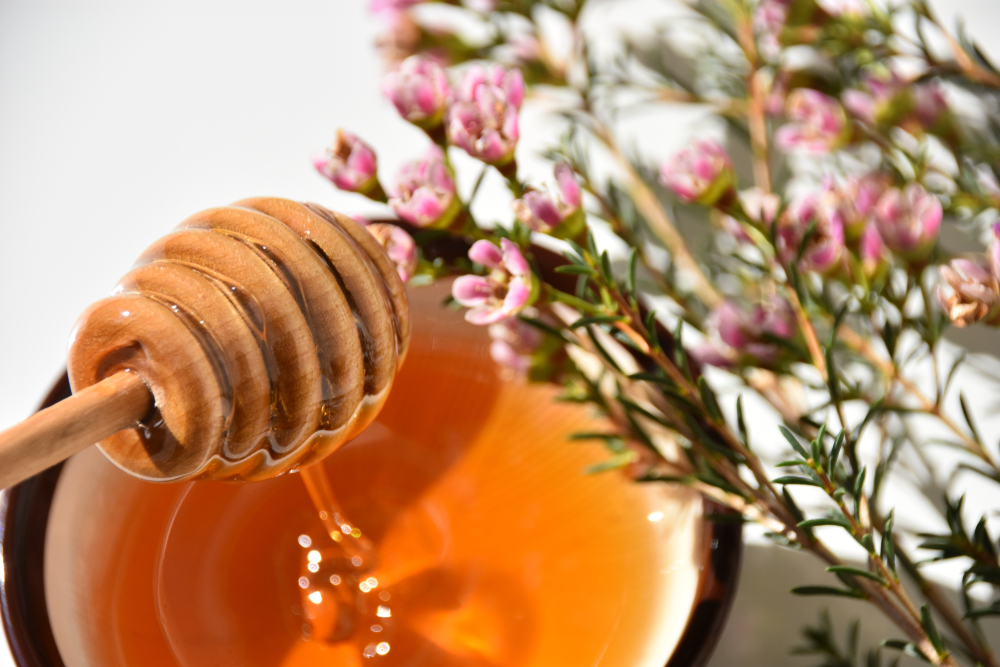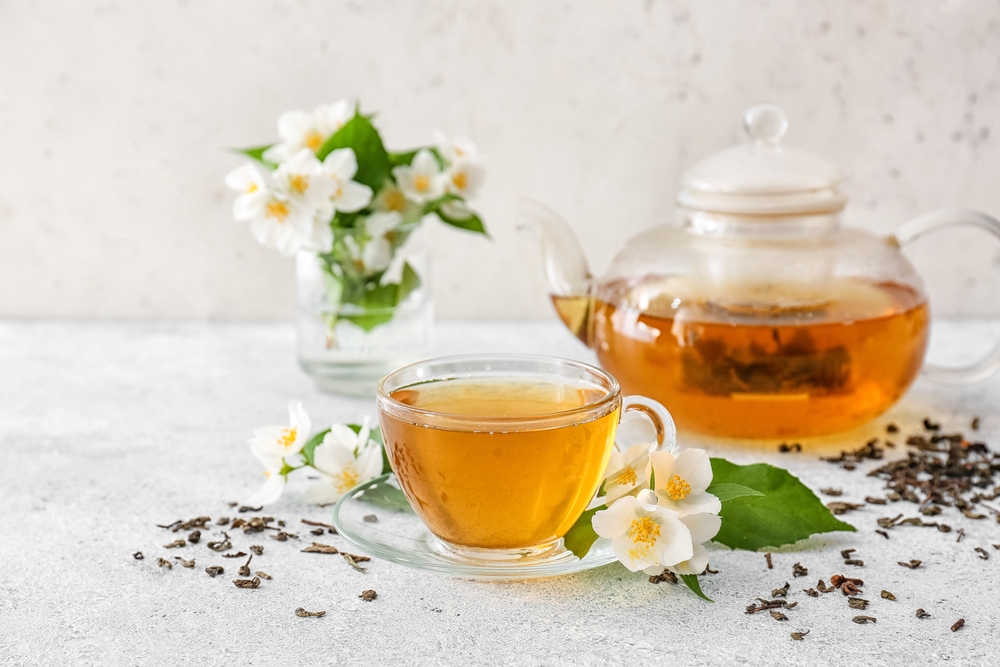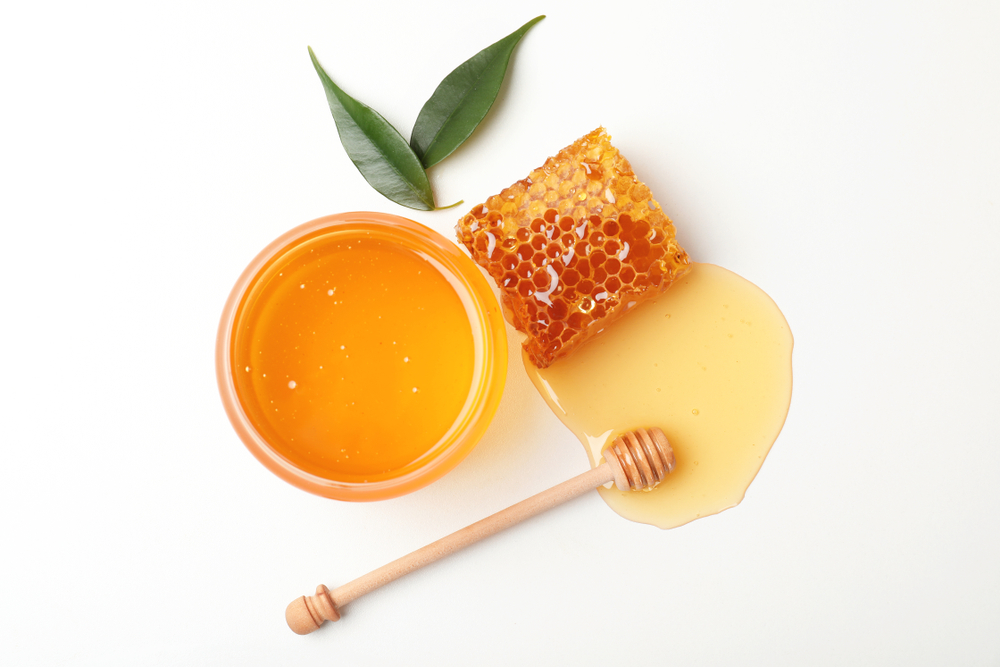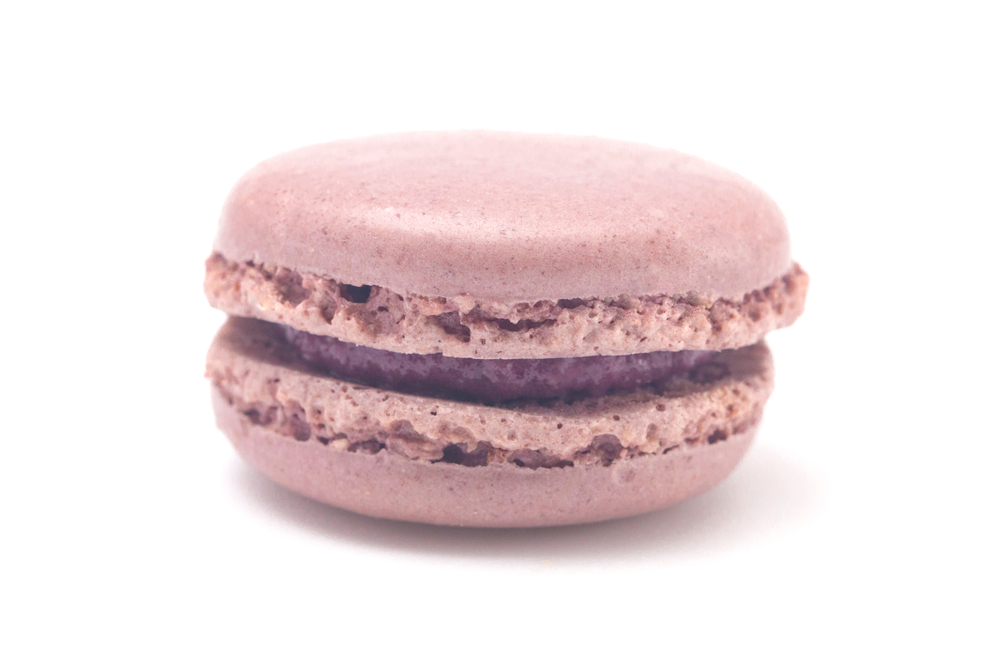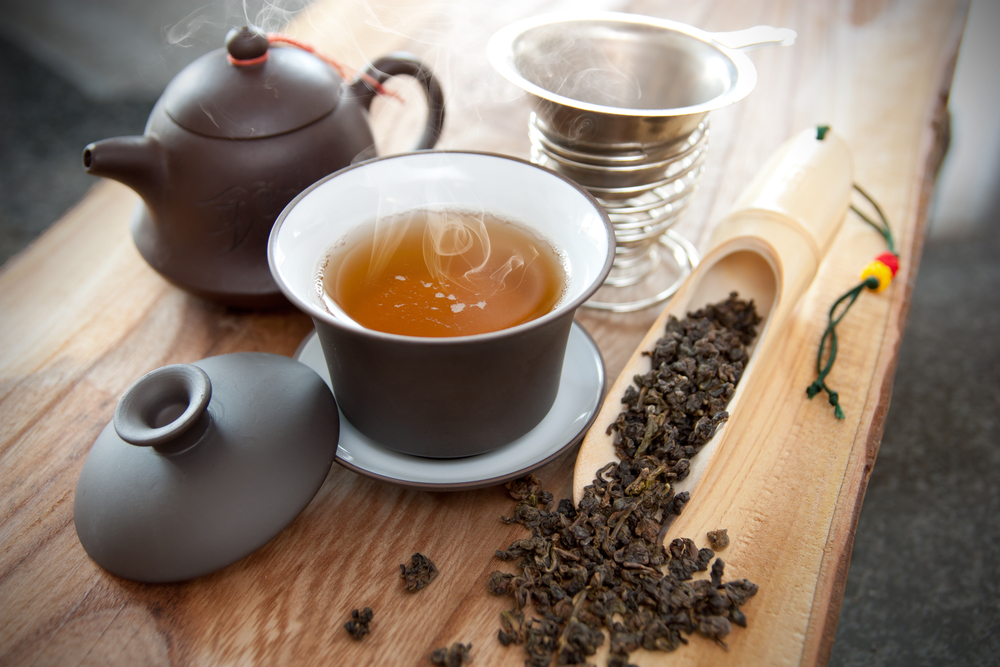I absolutely love honeycomb! It’s a unique and delicious treat that can be enjoyed on its own or incorporated into various recipes.
If you’re not familiar with honeycomb, you might be wondering what it tastes like. Well, let me tell you that the taste of honeycomb is unlike anything else.
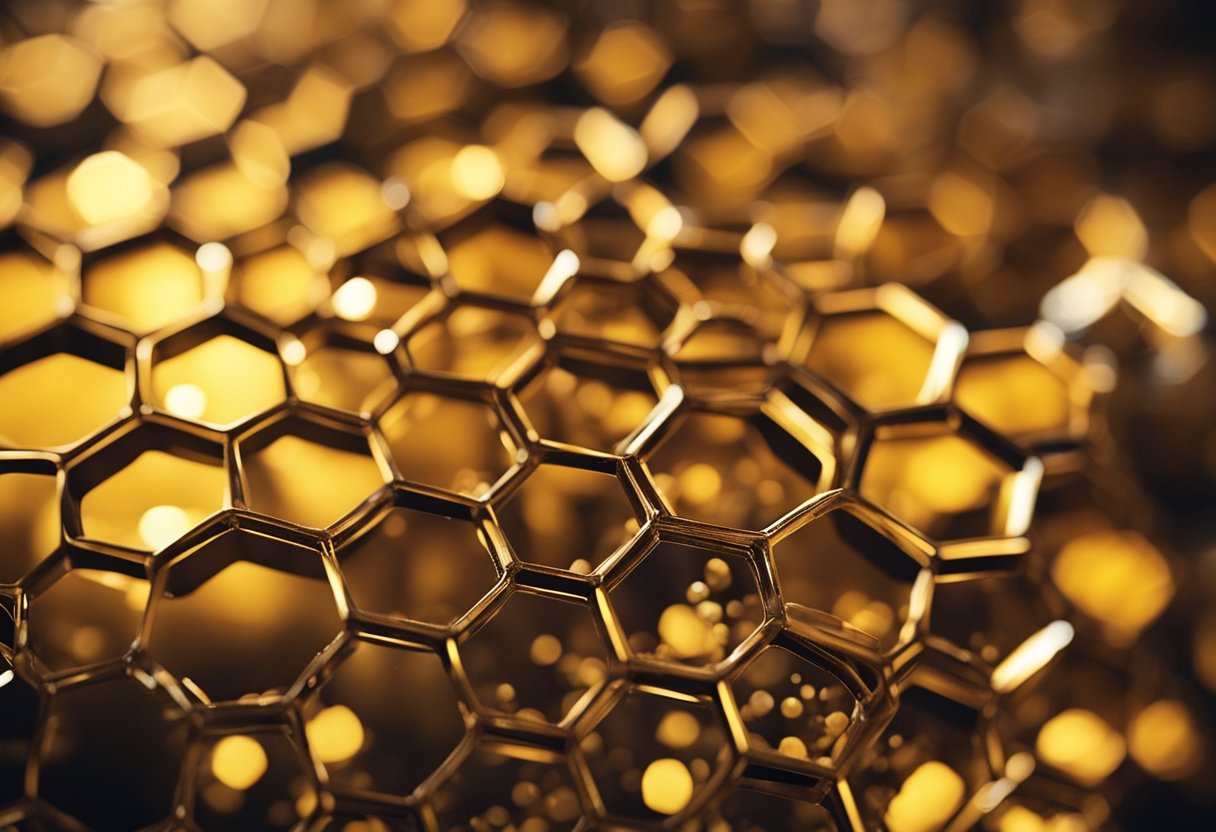
Honeycomb is made by bees and is essentially a waxy structure filled with honey. As you can imagine, the taste of honeycomb is sweet, but it’s not overly sugary.
The flavor is complex, with notes of floral and earthy undertones. The taste can vary depending on the type of flowers the bees have visited to make the honey.
Key Takeaways
- Honeycomb is a waxy structure filled with honey, made by bees.
- The taste of honeycomb is sweet, with complex floral and earthy undertones.
- The taste can vary depending on the type of flowers the bees have visited to make the honey.
Understanding Honeycomb
As a beekeeper, I have had the opportunity to taste honeycomb straight from the hive. Honeycomb is a mass of prismatic wax that contains the honey and larva of honeybees.
It is a natural product of beeswax, which is produced by worker bees from glands in their abdomen. The wax is then used to build the hexagonal cells of the comb.
Honeycomb has a unique taste and texture that is worth experiencing at least once in your lifetime. It is not only edible but also has several health benefits. Honeycomb is a rich source of antioxidants, vitamins, and minerals. It is also a natural source of energy and can help boost the immune system.
The taste of honeycomb can vary depending on the type of flowers bees collected nectar from. Honeycomb has a delicate, light, and aromatic taste, with hints of various floral flavors.
It has a crunchy texture, and it feels like eating a wax bottle of candy with honey inside instead of juice. Honeycomb tastes sweeter than regular honey available in the market. It is a little bit crystallized, and it can taste a little bit sweeter than regular honey.
Honeycomb is commonly eaten as a snack or used as a sweetener in various dishes. It can be eaten raw, or it can be spread on toast or crackers. Honeycomb can also be used as a topping for ice cream or yogurt. It can even be used in baking to add a unique flavor to cakes and pastries.
Overall, honeycomb is a delicious and healthy natural product that is worth trying. It has a unique taste and texture that is different from regular honey, and it can be used in various ways to add flavor and sweetness to your favorite dishes.
As a beekeeper, I highly recommend trying honeycomb straight from the hive to experience its full flavor and health benefits.
Taste of Honeycomb
As a food lover, I have always been curious about the taste of honeycomb. After trying it, I can confidently say that it has a unique taste and texture that is worth experiencing at least once in your lifetime.
Honeycomb tastes sweet, with a distinct nutty flavor and a hint of floral notes. The sweetness of honeycomb comes from the sugar content in the honey, which is stored in the wax cells of the comb.
The wax cells are thin and delicate, and they have a flaky texture that gradually reaches the consistency of bubble gum.
When you chew honeycomb, the wax releases the honey, giving it a gooey texture that melts in your mouth. The chewy texture of honeycomb is similar to that of chewing gum, but with a natural sweetness that comes from the honey.
One thing to note is that the taste of honeycomb can vary depending on the type of honey and the flowers that the bees used to make it. Some honeycombs have a more intense flavor, while others are milder and have a subtle sweetness.
In summary, honeycomb is a unique food that has a sweet taste and a nutty flavor with a hint of floral notes. Its texture is flaky and gradually becomes chewy, similar to bubble gum. The taste of honeycomb can vary depending on the type of honey and the flowers used to make it.
Texture of Honeycomb
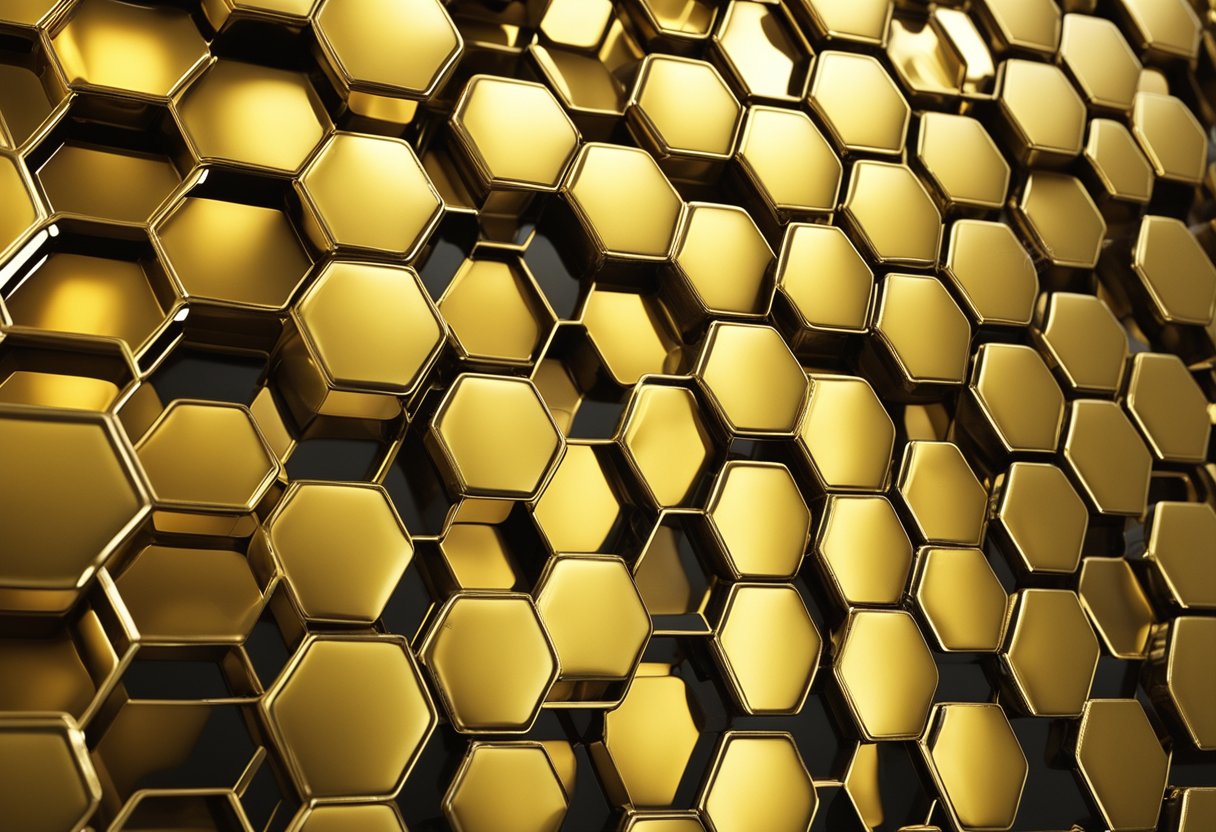
As someone who has tasted honeycomb before, I can confidently say that the texture of honeycomb is unique and enjoyable. When you first bite into a piece of honeycomb, you’ll notice that it has a slightly crunchy texture. The crunchy texture is due to the wax cells that make up the honeycomb.
However, as you continue to chew, the texture changes to become chewy, almost like a piece of chewing gum. This chewy texture is due to the honey that fills the wax cells of the honeycomb. The honey gives the honeycomb a sticky and chewy texture that is enjoyable to eat.
One thing to note is that the texture of honeycomb can vary depending on the type of honey and how old the honeycomb is. Some honeycombs can have a flaky texture at the beginning, but as you begin to move it around in your mouth, it becomes chewy.
It’s also worth mentioning that the honey near the inside of the honeycomb may be crystallized, which can give it a slightly crunchy texture.
This crystallization occurs when the glucose in the honey separates from the water and forms crystals. The crystallized honey can taste a little bit sweeter than regular honey, making it a delicious treat.
Overall, the texture of honeycomb is a unique combination of crunchy and chewy. The crunchy texture comes from the wax cells, while the chewy texture comes from the honey. The texture can vary depending on the type of honey and how old the honeycomb is, but it’s always an enjoyable experience to eat.
How Honeycomb is Made
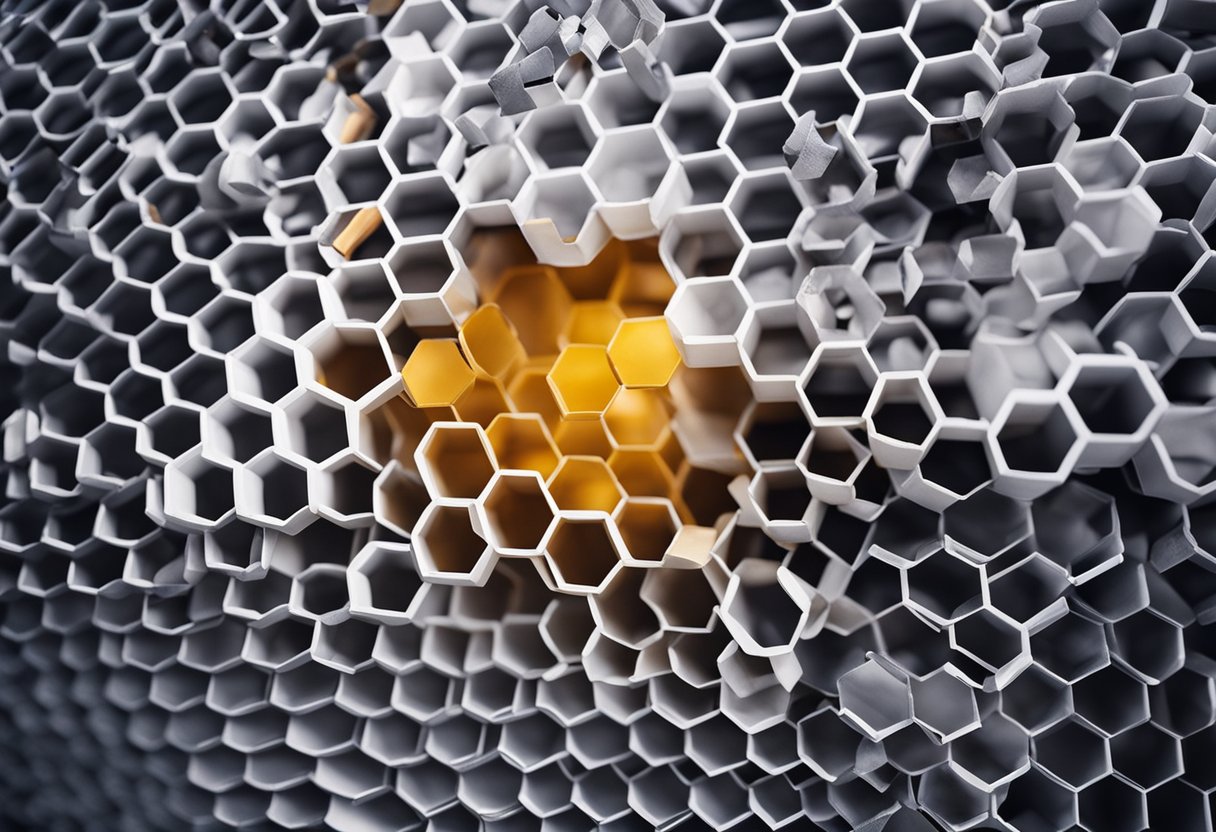
As a beekeeper, I have observed the process of honeycomb formation firsthand. Honeycomb is made by worker bees inside the hive using beeswax produced from glands on their abdomen.
The process starts with the collection of nectar and pollen by the foraging bees from flowers. The nectar is then stored in the bees’ honey stomach where it mixes with enzymes that break down the complex sugars into simpler forms.
Once the foraging bees return to the hive, they transfer the nectar to the worker bees who then process it further. The worker bees regurgitate the nectar and pass it to other bees who continue to regurgitate and pass it along until it is finally deposited into a honeycomb cell.
The bees then fan their wings to evaporate the water content from the nectar, leaving behind the thick, sweet liquid we know as honey.
As the bees continue to deposit honey into the cells, they also start to secrete wax from their glands. The wax is then chewed and molded into the hexagonal shape of the honeycomb cells. The hexagonal shape allows for maximum storage space while minimizing the amount of wax used.
Once the honeycomb is formed, it is filled with honey and capped with a layer of wax to seal it. The bees then repeat the process of collecting nectar, processing it, and depositing it into new honeycomb cells.
In summary, honeycomb is made by worker bees using beeswax produced from their glands. The process involves collecting nectar and pollen from flowers, processing the nectar into honey, and molding the wax into hexagonal cells for storage.
The end result is a delicious and nutritious natural product that has been enjoyed by humans for thousands of years.
Eating Honeycomb
I have always been fascinated by honeycomb, and I was curious about its taste. After doing some research and trying it myself, I have come to a conclusion about what it tastes like and how to eat it.
First of all, honeycomb is edible, and it is safe to consume. The wax that forms the comb is also edible, but it does not have much flavor. The nectar inside the cells is what makes it so appealing to us.
To serve honeycomb, you can buy it in round or square tubs. It is waxy and sticky, just like you would expect, and the simplest way to extract it is by using a spoon or fork. You can also eat it directly from the comb.
When eating honeycomb, it is important to note that the texture is crunchy, and it is a lot like eating a wax-bottle candy that has honey inside instead of juice.
As you chew the honeycomb and extract the honey in your mouth, you will find that the residual wax forms a lump. You can ingest the wax or spit it out if you don’t like doing so, but honeycombs are completely edible.
Fresh honeycomb is the best way to enjoy its taste. It has a sweet and slightly floral flavor that is unique and delicious. If you have never tried it before, I highly recommend giving it a try.
In conclusion, honeycomb is an edible hive product made by honeybees and consumed by humans for its sweet flavor. It has a unique texture and provides a rich source of pollen and vitamins. When eating honeycomb, it is best to serve it fresh and extract it using a spoon or fork.
Pairing Honeycomb with Other Foods
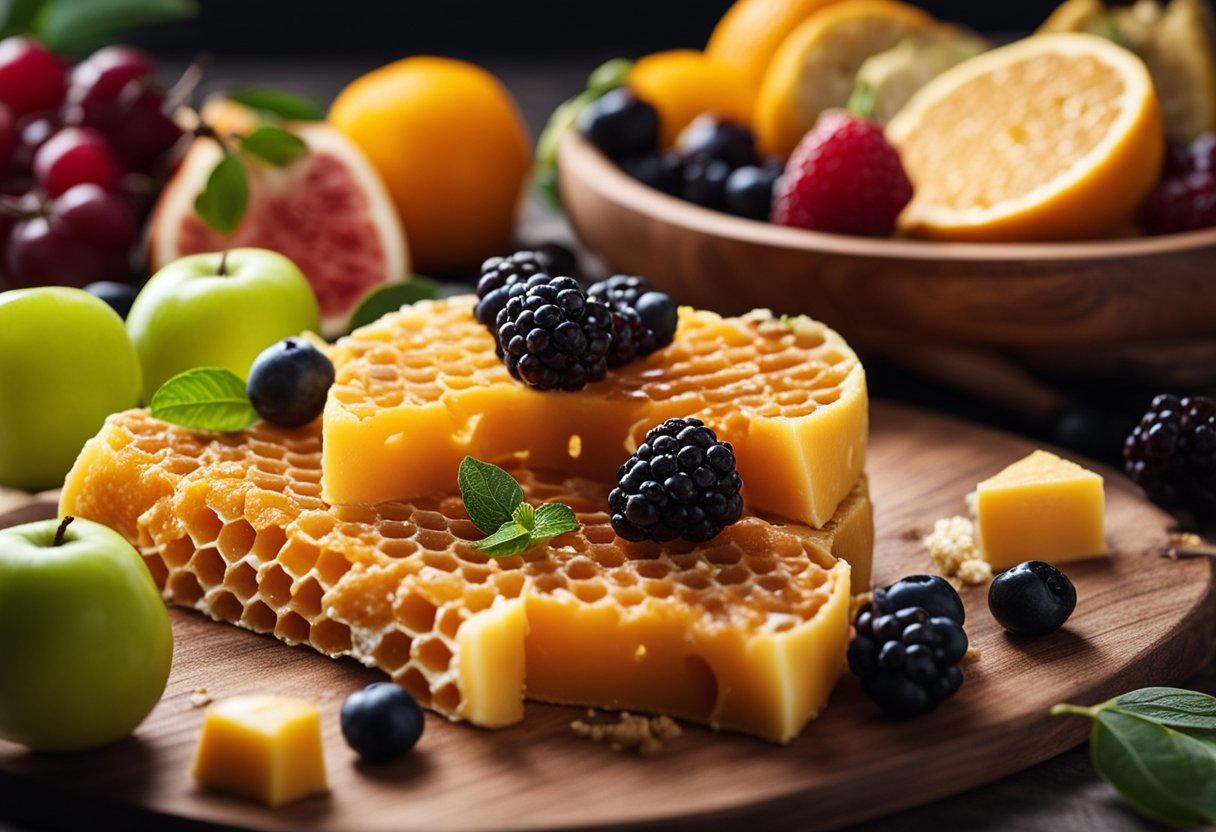
As a versatile and delicious food, honeycomb pairs well with a variety of other foods. Here are some suggestions for pairing honeycomb with other foods:
- Cheese: Honeycomb’s sweetness beautifully balances the richness and saltiness of artisanal cheeses. Try pairing honeycomb with goat cheese or a sharp cheddar for a delicious and sophisticated snack or appetizer.
- Yogurt and Ice Cream: Drizzling honeycomb over Greek yogurt or ice cream creates a heavenly combination of flavors and textures. The sweetness of the honeycomb complements the creaminess of the yogurt or ice cream, making for a satisfying and indulgent treat.
- Fruit: Honeycomb pairs well with a variety of fruits, including sliced apples, pears, and berries. The sweetness of the honeycomb enhances the natural sweetness of the fruit, creating a delicious and healthy snack.
- Oatmeal and Cereal: Adding honeycomb to your morning oatmeal or cereal can take your breakfast to the next level. The crispy texture of the honeycomb adds a satisfying crunch, while the sweetness of the honeycomb complements the nuttiness of the oats or the sweetness of the cereal.
- Salads: Honeycomb can add a unique and delicious twist to your favorite salads. Try adding crumbled honeycomb to a salad of arugula, goat cheese, and sliced pears for a memorable and spectacular salad.
- Toast: Spread honeycomb on toast for a sweet and satisfying breakfast or snack. The honeycomb melts slightly on the warm toast, creating a delicious and gooey treat.
Overall, honeycomb is a versatile and delicious food that pairs well with a variety of other foods. Whether you’re looking for a sweet and indulgent treat or a healthy and satisfying snack, honeycomb is a great choice.
Storing Honeycomb
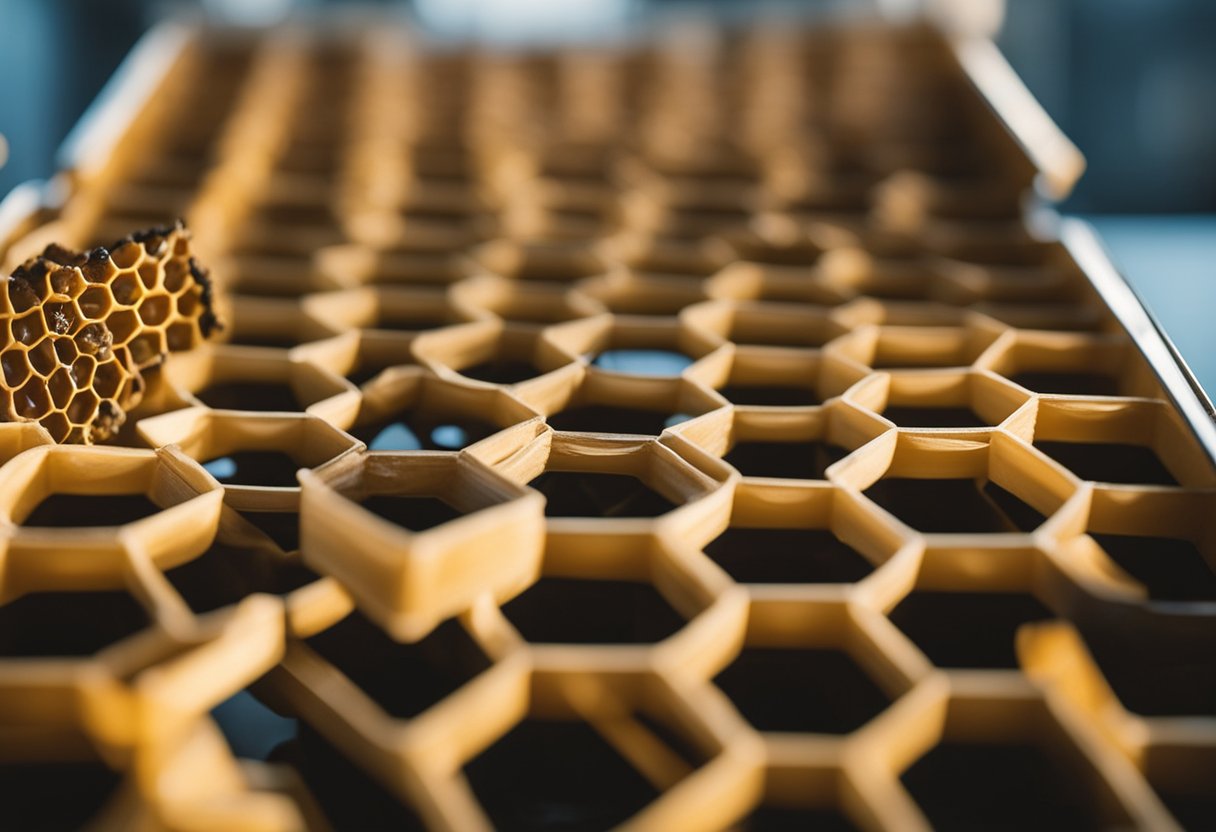
As a natural product, honeycomb requires proper storage to maintain its quality and taste. Here are some tips on how to store honeycomb:
- Room temperature: Honeycomb should be stored at room temperature, away from direct sunlight and heat sources. Exposure to heat and sunlight can cause the wax to melt and affect the taste of the honey.
- Storage container: To protect the honeycomb from dust and other contaminants, it should be stored in an airtight container. Glass jars or plastic containers with tight-fitting lids are good options.
- Freezing honeycomb: Honeycomb can be frozen for long-term storage. Wrap the honeycomb in plastic wrap or aluminum foil and place it in an airtight container. Thaw the honeycomb at room temperature before using.
- Short-term storage: If you plan to use the honeycomb within a week or two, you can store it at room temperature in its original wax comb.
- Avoid moisture: Honeycomb should be kept dry, as moisture can cause the wax to soften and the honey to ferment. Avoid storing honeycomb in humid areas or near open windows.
- Avoid containers with strong odors: Honeycomb can absorb the flavors and odors of other foods, so it’s best to store it in a container that doesn’t have a strong smell.
By following these simple tips, you can ensure that your honeycomb stays fresh and delicious for longer.
Health Benefits of Honeycomb
As a natural product, honeycomb has many health benefits. It is full of vitamins, minerals, and micronutrients that can boost your immune system and improve your overall health.
One of the main benefits of honeycomb is that it is a great source of calcium. This mineral is essential for strong bones and teeth, and honeycomb is a natural way to get more of it into your diet.
Honeycomb is also high in zinc, which is another important mineral for your health. Zinc is essential for wound healing, immune function, and cell growth and division.
In addition to these minerals, honeycomb is also rich in vitamin B6 and vitamin A. Vitamin B6 is important for brain function, while vitamin A is essential for good vision and healthy skin.
Honeycomb also contains antioxidants, which can help protect your cells from damage caused by free radicals. These antioxidants can help reduce inflammation in your body and may even help prevent certain diseases.
Finally, honeycomb contains propolis and royal jelly, two substances that have been shown to have antibacterial and anti-inflammatory properties. These substances can help boost your immune system and protect you from infections.
Overall, honeycomb is a nutritious and delicious food that can provide many health benefits. Whether you eat it on its own or use it as a natural sweetener, honeycomb is a great addition to any healthy diet.
Honeycomb in Recipes
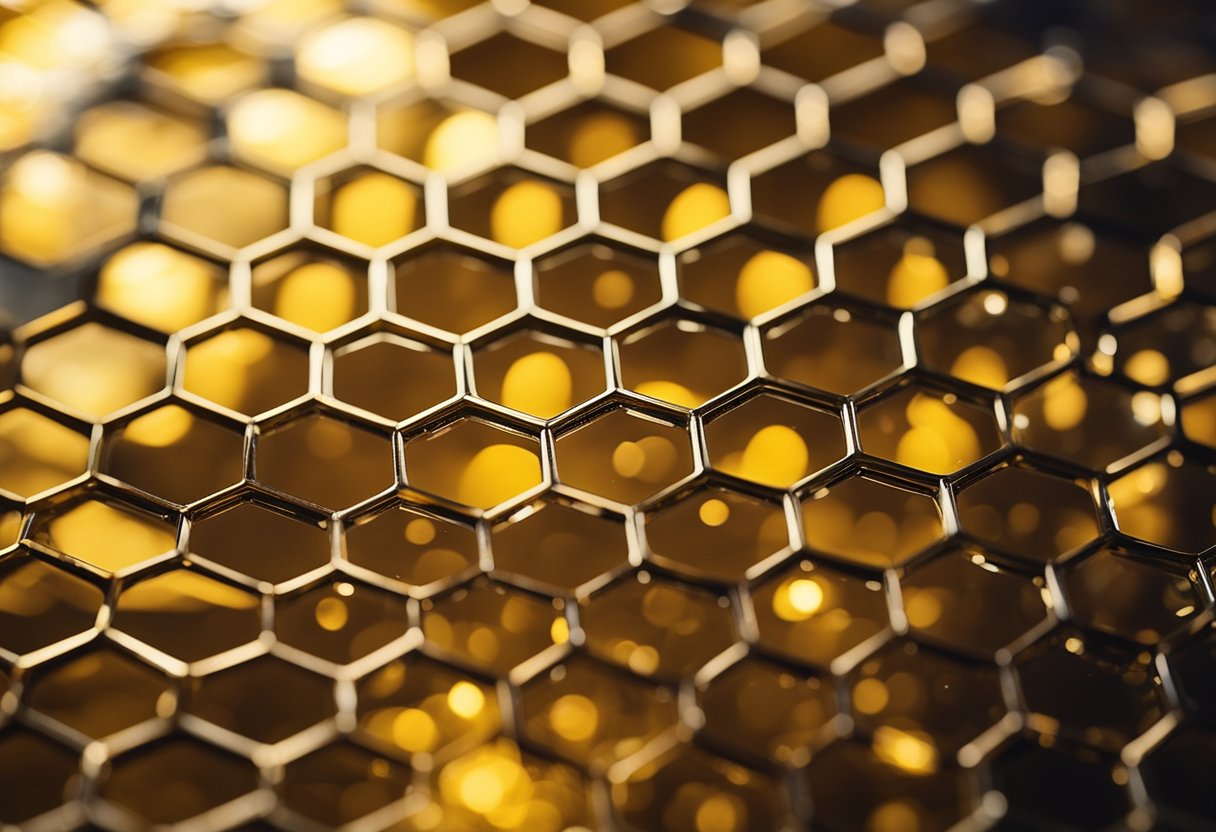
Honeycomb is a versatile ingredient that can add a unique flavor and texture to many recipes. Here are some ways to incorporate honeycomb in your cooking and baking:
Desserts
Honeycomb can be used as a topping for desserts like ice cream, yogurt, and cakes. Simply break off small pieces of honeycomb and sprinkle them over your dessert for a sweet and crunchy addition. You can also chop up honeycomb and mix it into cookie dough or brownie batter for a delicious twist on classic desserts.
Pancakes and Waffles
For a decadent breakfast treat, try adding chopped honeycomb to your pancake or waffle batter. The honeycomb will melt and create pockets of sweetness throughout the pancake or waffle. Top with butter and maple syrup for a delicious morning meal.
Smoothies
Honeycomb can also be blended into smoothies for a sweet and nutritious boost. Simply add a small piece of honeycomb to your blender along with your favorite fruits, yogurt, and milk. Blend until smooth and enjoy a delicious and unique smoothie.
Recipes
Honeycomb can be used as an ingredient in many recipes, from marinades to salad dressings. Try mixing chopped honeycomb with olive oil, vinegar, and herbs for a sweet and tangy salad dressing. You can also use honeycomb as a sweetener in marinades for meats like chicken and pork.
In conclusion, honeycomb is a versatile ingredient that can be used in many recipes to add a unique flavor and texture. Whether you’re topping a dessert, adding it to pancakes, blending it into a smoothie, or using it in a recipe, honeycomb is sure to add a delicious twist to your cooking and baking.
Honeycomb’s Historical Significance
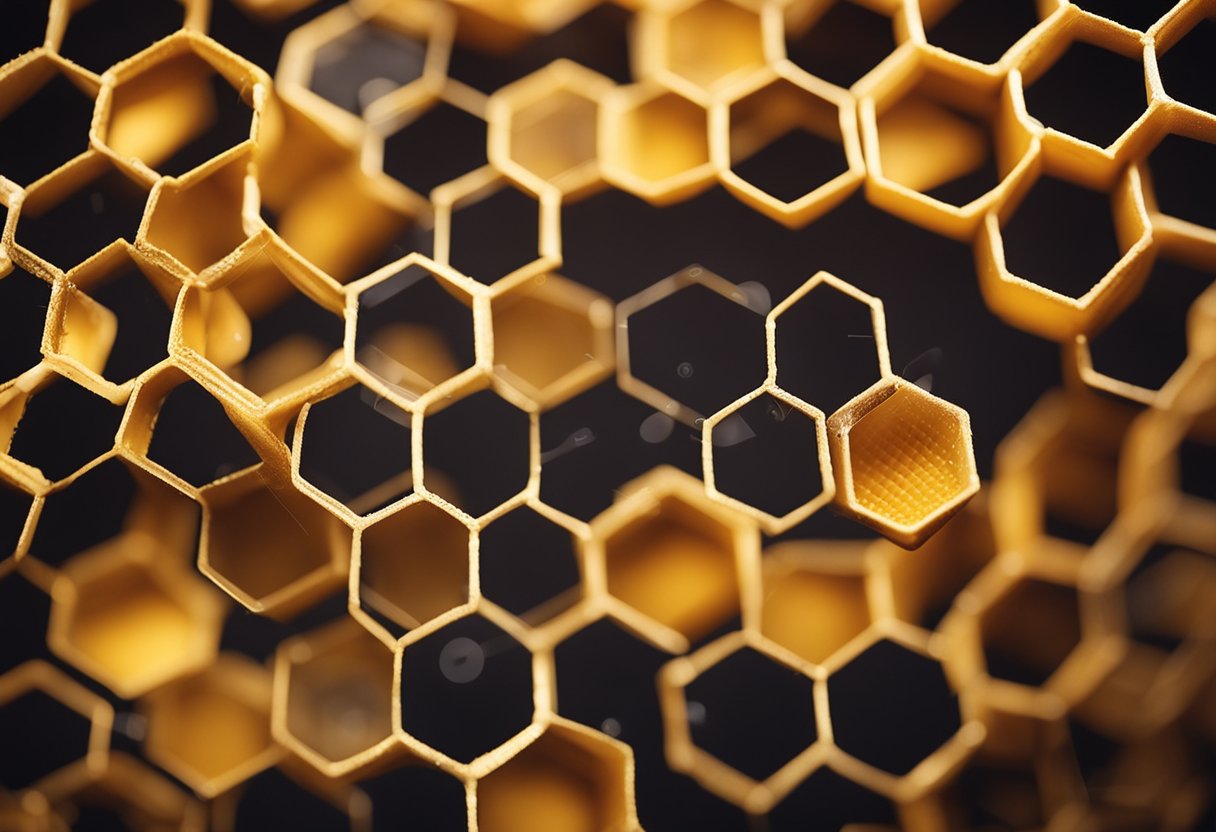
Honeycomb has been a sweet delicacy enjoyed by humans for centuries. Its historical significance dates back to the ancient Egyptians, who considered honeycomb a symbol of resurrection and included it in their tombs. The Egyptians also used honeycomb as a sweetener and a preservative for food.
The beehive, the home of bees, was also significant in ancient times. The Greeks and Romans saw the beehive as a symbol of industry and hard work. They also believed that bees were messengers of the gods and that honey had healing properties.
Honeycomb was also used in traditional medicine in many cultures. It was believed to have antibacterial and anti-inflammatory properties and was used to treat wounds and sore throats.
Today, honeycomb is still used in many ways. It is a popular ingredient in many cuisines and is used as a natural sweetener. Honeycomb is also used in cosmetics and skincare products due to its moisturizing and soothing properties.
In conclusion, honeycomb has a rich historical significance and has been enjoyed by humans for centuries. Its use in traditional medicine and its significance in ancient cultures highlight its importance in human history.
Comparison of Honeycomb and Other Honey Products
When it comes to honey and honey products, there are a lot of options available in the market. In this section, I will compare honeycomb with other honey products to help you understand the differences.
Raw Honey vs. Processed Honey
Raw honey is honey that has not been heated, pasteurized, or processed in any way. It is the purest form of honey and retains all of its natural enzymes, antioxidants, and nutrients.
On the other hand, processed honey is heated and filtered to remove impurities and improve its appearance. While processed honey may look more appealing, it loses many of its health benefits during processing.
Honeycomb Honey vs. Liquid Honey
Honeycomb honey is honey that is still in its natural comb. It contains bits of beeswax and pollen, which add to its texture and flavor.
Liquid honey, on the other hand, is honey that has been extracted from the comb and filtered to remove any impurities. While liquid honey is easier to use, honeycomb honey has a unique taste and texture that many people prefer.
Raw Honeycomb vs. Raw Honey
Raw honeycomb is honey that is still in its natural comb and has not been processed in any way. It contains bits of beeswax and pollen, which add to its texture and flavor.
Raw honey, on the other hand, is honey that has been extracted from the comb and may or may not have been heated or pasteurized. Raw honeycomb is considered to be the purest form of honey and retains all of its natural enzymes and nutrients.
Filtered Honey vs. Unfiltered Honey
Filtered honey is honey that has been passed through a filter to remove any impurities, including bits of beeswax and pollen.
Unfiltered honey, on the other hand, is honey that has not been filtered and may contain bits of beeswax and pollen. While filtered honey may look more appealing, unfiltered honey retains all of its natural enzymes and nutrients.
In conclusion, honeycomb has a unique taste and texture that sets it apart from other honey products. While it may not be as convenient to use as liquid honey, its natural form retains all of its health benefits and adds a unique touch to any dish.
Frequently Asked Questions
Where can I buy honeycomb?
You can buy honeycomb at your local farmer’s market, health food store, or online. Look for honeycomb that is fresh and has a light color. Avoid buying honeycomb that is dark or has a strong odor, as this may indicate that it is old or has been contaminated.
What are the benefits of eating honeycomb?
Honeycomb is a natural source of antioxidants, enzymes, and vitamins. It has been shown to have antibacterial and anti-inflammatory properties, and may help boost the immune system and improve digestion.
However, more research is needed to fully understand the health benefits of honeycomb.
Is honeycomb safe to eat?
Yes, honeycomb is safe to eat. It is made from beeswax and honey, which are both natural and edible. However, some people may be allergic to bee products and should avoid eating honeycomb.
If you experience any symptoms of an allergic reaction, such as hives, swelling, or difficulty breathing, seek medical attention immediately.
What is honeycomb made of?
Honeycomb is made of beeswax and honey. Beeswax is a natural wax produced by honey bees, while honey is a sweet, viscous liquid produced by bees from the nectar of flowers.
How do I eat honeycomb?
To eat honeycomb, simply cut off a piece of the comb and chew it like gum. The honey inside the comb will slowly release as you chew, giving you a sweet and delicious flavor. You can also spread honeycomb on toast or crackers, or use it as a topping for yogurt or ice cream.
Why is honeycomb considered delicious?
Honeycomb is considered delicious because it has a unique texture and flavor. The wax is crunchy and slightly chewy, while the honey is sweet and fragrant. The combination of these two elements creates a delightful taste that is hard to resist.
Additionally, honeycomb is a natural and healthy alternative to processed sweets, making it a popular choice among health-conscious individuals.



